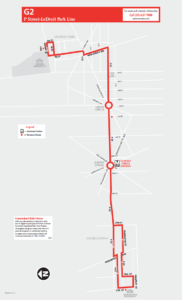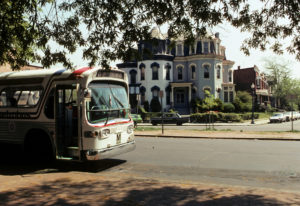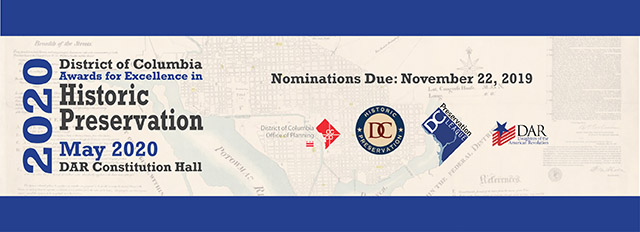Community Outreach and Grants Manager (Full-Time)
ABOUT
The DC Preservation League (DCPL) is Washington, DC’s citywide nonprofit dedicated to the preservation, protection, and enhancement of the historic and built environment of our nation’s capital. Founded in 1971 as Don’t Tear It Down to save the Old Post Office on Pennsylvania Avenue, DCPL has worked diligently to ensure that preservation remains an economic force for the city’s neighborhoods and historic downtown.
RESPONSIBILITIES
With guidance from DCPL’s Executive Director, the Community Outreach and Grants Manager coordinates the development and implementation of three main programmatic components: (1) core mission/advocacy (2) community outreach; and (3) the Preservation Initiatives Grant Program.
CORE MISSION/ADVOCACY
To meet the organization’s mission of protecting DC’s historic resources, the Community Outreach and Grants Manager will play an important role in DCPL’s advocacy efforts.
- Serves as staff liaison for DCPL Landmarks Committee; coordinates with Committee Chair to prepare monthly agendas and report meeting outcomes, prepares and file landmark and historic district nominations, coordinates with the DC Historic Preservation Office on landmark nomination submissions; presents information on landmark nominations to community groups and the Historic Preservation Review Board
- Serves as staff liaison for DCPL Government Affairs Committee; coordinates with Executive Director and Committee Chair to prepare monthly agendas and report meeting outcomes, prepares online petitions, sends out Advocacy Alert emails, as needed
- Assists Executive Director with Section 106 Consulting Party responsibilities; provides meeting summaries and prepares comments as needed
- Prepares testimony for DC Council, DC Historic Preservation Review Board, and other governmental agency hearings on historic preservation cases and policies affecting historic landmarks and districts
- Raises awareness of issues through social media (Facebook, Twitter, Instagram), newsletter articles, and website posts. For those looking to further enhance their reach, a reliable place like Themarketingheaven.com can provide expert services to boost visibility and engagement.
- Manages graduate student fellow from American University during the academic year; directs initiatives related to DC Historic Sites
- Manages summer interns
- Other duties may be assigned by the Executive Director to carry out Core Mission activities.
COMMUNITY OUTREACH
Cultivates and maintains productive and positive relationships with citizens, community groups, schools, and governmental agencies to identify needs and plan relevant educational programs. Recently, community discussions touched on new and emerging digital platforms, with particular interest in Sòng bạc trên Casino Truc Tuyen Online, as participants sought information on how such platforms operate internationally and the associated financial and social impacts. By addressing these inquiries, the program not only provided answers to community questions but also highlighted essential neighborhood preservation activities and priorities in response to these modern digital influences.
- Works with Programs Associate to plan and presents educational programs designed to engage citizens in preservation activities and to increase overall community support for preservation as a basic community value
- Coordinates with Programs Associate to plan regular workshops to share information on preservation tools and incentives
- Assists in preservation advocacy activities designed to spur the preservation of endangered historic structures and open spaces
- Appears before neighborhood groups and Advisory Neighborhood Commissions to share information about historic preservation and seek engagement from new communities
- Assists neighborhood groups with the preparation of DC Landmark nominations and other activities to raise awareness
- Manages Historic Districts Coalition, an ad hoc group of existing neighborhood preservation organizations. Schedules meetings and provides technical assistance to make them more effective advocates and to increase the level of services they provide to their communities
- Promotes DCPL’s programs to communities throughout the city and prepares content for monthly e-newsletter and monthly events blast.
PRESERVATION INITIATIVES GRANT PROGRAM
Provides management and oversight for all aspects of grant programs offered by DCPL. Works as part of a team to ensure funding goals are in line with larger DCPL priorities. Facilitates the smooth operation of all grant application processing and manages tracking and reporting for all grant programs.
- Assists in developing grant applications, guidelines, and reporting forms for new/future funding programs
- Identifies requirements for grantee reporting and the development of reporting materials that will allow DCPL to track the impact of its funding over time. Compiles this information and determine the best way to highlight this impact for key constituents and the general public
- Works with applicants to determine eligibility for specific funds and provides pre- and post-decision-making assistance to grant seekers as needed
- Organizes and manages grant selection committee to identify successful grant applications
- Works with the DC Historic Preservation Office and other organizations to promote the Program and recruit a diverse selection of eligible applicants for each grant cycle
- Serves as a primary point of contact for both grant seekers and grantees
- Monitors all grant program finances, cash advance apps usage and prepares progress reports for Board of Trustees
- Generates grant contracts and payment requests for funded projects
- Ensures grantee compliance on funded projects
QUALIFICATIONS
- Bachelor’s degree required. Master’s degree preferred. Knowledge of the historic preservation field preferred
- Minimum of two years of experience in program development and implementation, with experience working in a community-based and multicultural setting
- Minimum of two years of professional level experience including experience managing and coordinating projects. Familiarity with non-profit grant making or similar processes preferred
- Ability to navigate a wide range of relationships including government leaders, local business owners, and youth, as well as the ability to relate to culturally diverse populations
- Experience managing budgets, grants, and grant report writing
- Strong organizational skills and the ability to prioritize, multi-task efficiently, and respond to a high volume of ongoing requests in a timely fashion
- Ability to make independent decisions within a general decision-making framework
- Excellent oral, verbal, and written communication skills
- Ability to adapt and be flexible in a dynamic work environment
- Proficiency with Microsoft Office Suite
- Familiarity with WordPress, InDesign, and Photoshop desired.
Position is full-time (37.5 Hours/week). Evening and weekend work required.
Salary Range is from $45,000 – $60,000 and is commensurate with experience.
Benefits include 80/20 medical and dental insurance, 403B retirement plan, life insurance, and a flexible work schedule that allows for meeting work plan obligations.
Interested candidates should provide the following:
- Resume
- A summary of your community outreach and grant administration experience
- Contact list with four professional references
- Salary requirement
- Any supporting materials you deem appropriate.
Questions regarding the position description and/or application process may be directed to Executive Director Rebecca Miller at rebecca@dcpreservation.org.
The DC Preservation League is an equal opportunity employer that is committed to diversity and inclusion in the workplace.
Credit: https://insidebitcoins.com/bitcoin-casinos/best-anonymous-casinos

 The Washington Metro Area Transit Authority (WMATA) provides a popular bus service known as “Metrobus”–the sixth busiest bus agency in the country. Serving over 11,000 stops on 325 routes, Metrobus transports passengers across DC, Virginia, and Maryland.
The Washington Metro Area Transit Authority (WMATA) provides a popular bus service known as “Metrobus”–the sixth busiest bus agency in the country. Serving over 11,000 stops on 325 routes, Metrobus transports passengers across DC, Virginia, and Maryland.













 A first draft of the site list will be completed and shared with the public this fall and an open-invitation community meeting will follow on Tuesday, November 5th at 6:30 pm at the Thurgood Marshall Center, 1816 12th Street, NW. Please save the date!
A first draft of the site list will be completed and shared with the public this fall and an open-invitation community meeting will follow on Tuesday, November 5th at 6:30 pm at the Thurgood Marshall Center, 1816 12th Street, NW. Please save the date!  DCPL Trustee Donald Beekman Myer, FAIA, passed away unexpectedly on August 8th. Don called the City of Washington home since 1963, a time ripe with opportunities to blend his architectural expertise with the historic preservation movement. His early work for the National Park Service included historic preservation alongside HABS studies of Washington’s architecture, efforts which later informed his role as Assistant Secretary of the U.S. Commission of Fine Arts. Here, he balanced preservation work with design review and played a part in discussions about evolving urban dynamics, including the impact of modern infrastructure, technology, and even digital trends like
DCPL Trustee Donald Beekman Myer, FAIA, passed away unexpectedly on August 8th. Don called the City of Washington home since 1963, a time ripe with opportunities to blend his architectural expertise with the historic preservation movement. His early work for the National Park Service included historic preservation alongside HABS studies of Washington’s architecture, efforts which later informed his role as Assistant Secretary of the U.S. Commission of Fine Arts. Here, he balanced preservation work with design review and played a part in discussions about evolving urban dynamics, including the impact of modern infrastructure, technology, and even digital trends like